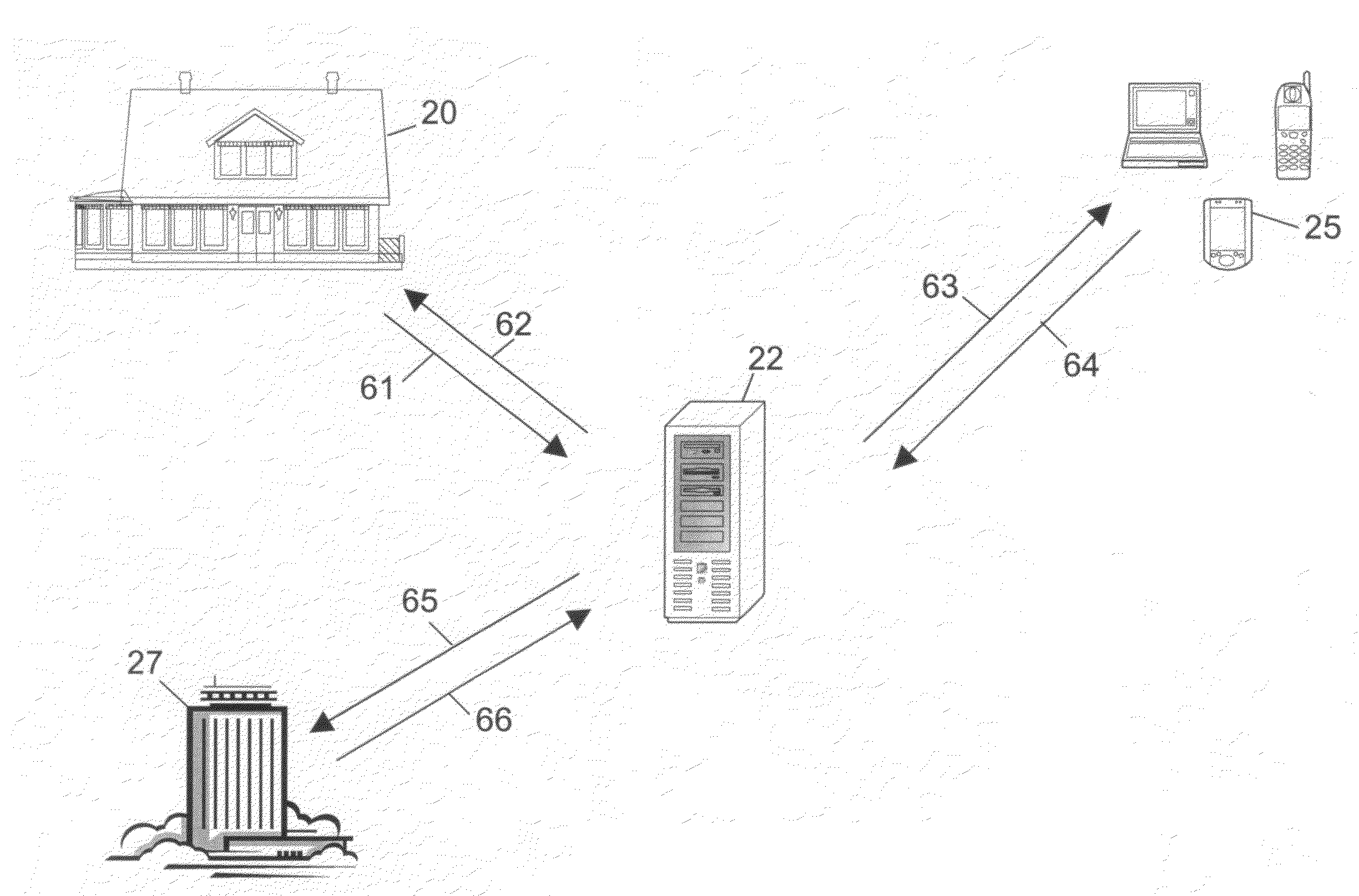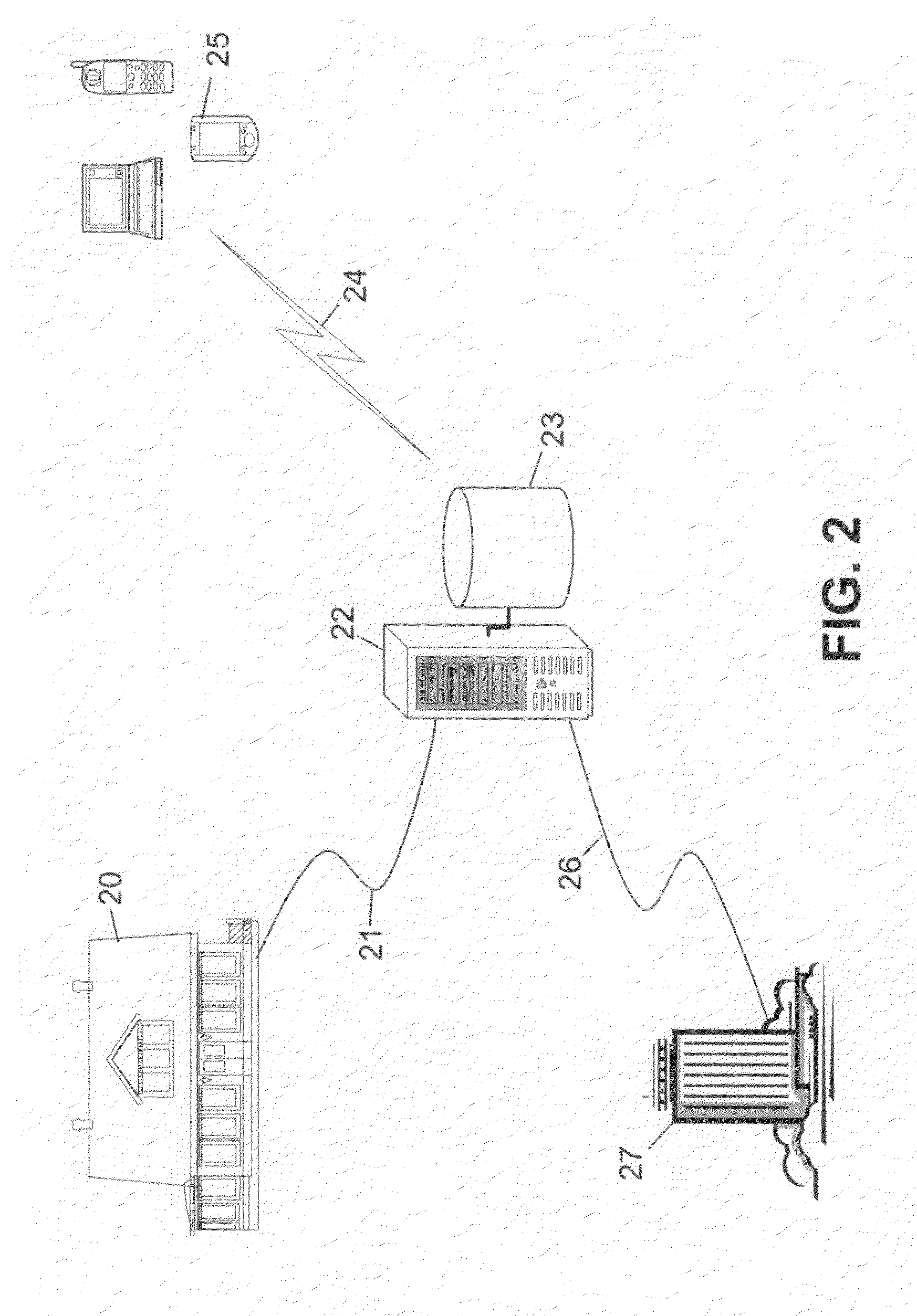Automated, remotely-verified alarm system with intrusion and video surveillance and digital video recording
a remote monitoring and alarm system technology, applied in the field of intrusion alarm systems, can solve problems such as prone to false alarms, call being placed, and sensors only providing binary information
- Summary
- Abstract
- Description
- Claims
- Application Information
AI Technical Summary
Benefits of technology
Problems solved by technology
Method used
Image
Examples
embodiment
An Exemplary Alarm Method Embodiment
[0094]With reference to FIG. 7, a simplified description of an embodiment of the invented alarm system method is provided below for additional clarity, from the perspective of an end user employing the alarm system.
[0095]At 71, the alarm system captures image data and transmits a first signal to the SSMG. The SSMG receives the first signal, and transmits a second signal to a server portion, at 72, and then at 73, the server portion receives the second signal, and transmits a third signal to a device of the end user. The end user device receives the third signal, and at 74, the user views image data of the third signal at a display of the end user device. At 75, the end user inputs validation data (e.g., “Valid Alarm”, “Invalid Alarm”), and transmits a fourth signal from the end user device to the server portion. The server portion, at 76, receives the fourth signal, and if the fourth signal includes data indicating that the alarm is valid, the ser...
PUM
 Login to View More
Login to View More Abstract
Description
Claims
Application Information
 Login to View More
Login to View More - R&D
- Intellectual Property
- Life Sciences
- Materials
- Tech Scout
- Unparalleled Data Quality
- Higher Quality Content
- 60% Fewer Hallucinations
Browse by: Latest US Patents, China's latest patents, Technical Efficacy Thesaurus, Application Domain, Technology Topic, Popular Technical Reports.
© 2025 PatSnap. All rights reserved.Legal|Privacy policy|Modern Slavery Act Transparency Statement|Sitemap|About US| Contact US: help@patsnap.com



